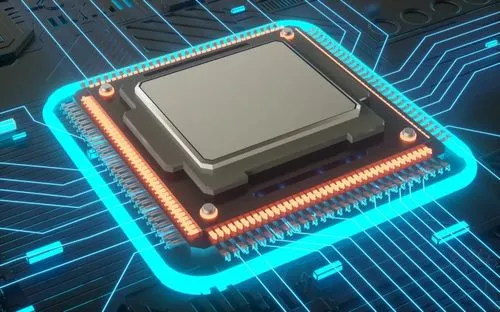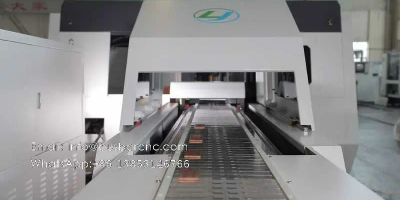The recent consumer electronics market “winter” will come, consumer electronics chips are also affected, before the smartphone cut single let cell phone TDDI caused widespread discussion, the recent consumer MCU price reduction news and rumors. A few days ago, a spokesman for Taiwan-based Holtek Semiconductor (hereinafter referred to as “Holtek”) said that the pricing of consumer MCUs in the mainland market was confusing and the company would let its distribution partners make price adjustments.
“There are many distributors who hoarded goods at high prices, but now the demand can’t keep up, domestic consumer MCU distributors are starting to reduce prices to clear inventory, and some foreign consumer MCUs are also in a state of price reduction recently.” A domestic consumer MCU sales Han Li has a lot of feelings about this. According to Han Li, the business of consumer MCUs in the market has not been doing well since last August.
As early as last year, the consumer MCU market had a price war, when Hetai also published a message that mainland MCU manufacturers low price to grab customers, and now the price war again, one can not help but question, before quite a while MCU is the hardest hit by the lack of core, why consumer MCU will fall into this situation? Read this article you will learn.
1. what happened to consumer MCUs?
2. What kind of changes have consumer MCUs undergone?
3. Are consumer MCUs really not working anymore?
What’s wrong with consumer MCUs?
“Hetai should be in a hurry when it makes such a statement.” Han Li said that the consumer MCU in the market has been in a state of price reduction, and the price of Hetai distributors has continued to drop, such as HT66F002 (the normal price before the lack of cores was about $1), by June last year, the offer in the market rose to $4-5, and now the offer is down to $1.5. The HT66F004 series, which is used in the field of small home appliances, has also dropped from $3 to $1.8-2 during normal order scheduling, and more and more domestic distributors are saying that consumer MCUs are not selling well.
MCU manufacturers in the market are divided into foreign manufacturers, Taiwanese manufacturers, and mainland manufacturers, among which foreign manufacturers mainly focus on automotive electronics, industrial control, medical applications, high specification 32-bit MCU dominance, and relatively low reliance on the channel, so the impact of changes in the market cycle of consumer MCUs is limited. The domestic MCU manufacturers are mainly concentrated in consumer, small home appliances and other fields, and most MCU models are concentrated in 8-bit MCU and 32-bit lower than 100MHz low-end consumer applications, such as Hetai, CoreSage, SMIC and other manufacturers.
According to Huaqiang cloud offer, the above manufacturers of consumer MCU prices have fallen to varying degrees, such as the core of the HC89F0421, the normal price of 0.8-1 yuan, in June last year, the highest point of about 2.5 yuan, now also down to 1.3-2 yuan. “Such as core sage, Lingdeng, Hetai and other domestic consumer MCU distributors are cutting prices to grab market share, and the price of some consumer MCUs has even dropped exponentially.”
According to Han Li, the market is not doing well for one reason is that the demand for consumer electronics is not coming up, and another reason is the competition in the market for price cuts. It is important to know that as the hardest hit by the lack of core, MCU market has been in a sustained growth phase in recent years. IC Insights predicts that global MCU sales will grow by another 10 percent to reach a new high of $21.5 billion in 2022, but in MCU market segments, there is a polarized state.
Automotive MCUs have formed a serious supply-demand differential with the dramatic increase in downstream demand and the lack of output from upstream companies. Currently, automotive MCUs are still in a widespread shortage and prices are performing very strongly, while on the contrary, consumer MCUs have started to fall in price due to the downward impact of consumer electronics demand. “Demand is too much less, and the customer’s inventory is better, not to reduce the price is naturally bad to sell.”
Han Li said that when the market was good before, the price of consumer MCUs was much higher than now, but with more and more domestic alternatives, customers are also starting to consciously stock up, gradually, consumer MCUs are not so short, coupled with the consumer electronics market is currently in a downward spiral, the epidemic, terminal cut orders and other factors led to the already less robust demand snowballed.
“Demand is already less, the customer’s stockpile is also doing well, according to my understanding, many customers with good inventory, according to the current order situation, even without lifting the case, are enough to use a long time, and now the market situation is not optimistic, if it is you, even if the price is reduced you will still buy?” Talking about this issue, Han Li is obviously a little excited. He said that now more and more stockpiling dealers, including some of the market speculation want to clear inventory, to seize market share, others have reduced the price, you can not reduce? The result is that the price of consumer MCUs is getting lower and lower, into a kind of price war vicious competition.
“I understand that almost all of the low-end domestic MCUs are cutting prices to capture market share. The market share of big consumer MCU manufacturers like Hetai has been taken up a lot, so it’s no wonder they are anxious, but the market demand is light, and there is little point in cutting prices, even if they are now given to customers, they just stay in the customer’s warehouse.” In Han Li’s words, the competition of price reduction in the market is only the surface reason, the market demand is the fundamental reason, can not solve the problem of demand, how to reduce the price is also meaningless.
What changes has the consumer MCU market experienced?
From the perspective of MCU usage, 4-bit and 8-bit MCUs are mostly used in consumer electronics. Although consumer MCUs are relatively low-end compared to automotive and industrial MCUs, the volume of the entire consumer market cannot be ignored.
Is consumer MCU really not working?
In 2021, the global MCU market sales, automotive MCU consumption accounted for 39%, while another 46% from the general embedded applications MCU (including smart phones, computers and peripherals, industrial use, consumer products, etc.), accounting for the same can not be ignored, the remaining 15% accounted for from smart cards and other uses. Representative manufacturers are ST, NXP, Microchip, etc.
Is consumer MCU really not working?
According to IC Insights data, there are five major categories of MCU product applications in China in 2020, with consumer electronics accounting for the highest percentage of 26% and the remaining categories being computers and networks (19%), automotive electronics (15%), IC cards (15%), and industrial control (10%). (10%). The main consumer MCU manufacturers in Taiwan are Hetai and Suntang, and the main consumer MCU manufacturers in China are Zhongying Electronics, SMIC, CoreTech, Smart Microelectronics, and Chensilicon.
Compared with international MCU vendors, Chinese MCU vendors are relatively weak in the mid- to high-end field, and their market share is mainly occupied by foreign vendors such as ST, NXP, Microchip, etc. In the mid- to low-end MCU field (mainly consumer MCUs), domestic vendors have done better in pin-to-pin in recent years. pin has done better, but in the general environment of a weak consumer electronics market, domestic MCU manufacturers are increasing prices less and less, we combed through the past consumer MCU trends.
In October 2020, the shortage of core wave broke out, foreign MCU manufacturers began to frequently release price increase letters, domestic consumer MCU manufacturers followed suit and also released price increase news one after another.
Subsequently, MCU entered a full-scale shortage, market stocking panic increased, IC distributors began to stock up, and consumer MCU market prices continued to amplify.
In July/August 2021, as the upstream supply eased and the downstream consumer electronics market became weak, the demand for consumer MCUs weakened significantly and the market price began to trend downward.
In December 2021, foreign manufacturers such as ST released price increase information again, intensifying market panic, some imported MCU (general-purpose models and high-end models) prices began to rebound, but the rebound phenomenon did not last long, and was in the price reduction state.
Domestic MCU vendors, such as Mega Innovations, Nationz Technologies, Neutron, Holtek, and CoreStone have not seen any price increases since 2022, and distributors in the market have also lowered the prices of low-end consumer MCU products.
There are more and more voices in the market for consumer electronics downside, and some of the consumer MCU distributors are cutting prices to grab market share frequently.
On April 26, DIGITIMES reported that industry sources revealed that IC distributors in mainland China are lowering the prices of consumer MCUs to reduce excess inventory.
Combined with the change in sentiment in the past, consumer MCUs have mainly experienced two inflection points. The first inflection point was in October 2020, when many chips were in shortage since the outbreak of the core shortage wave, and MCU was once the most scarce chip category in the market in 2021, with original price increase letters flying all over the place and exaggerated prices in the spot market, including consumer MCUs, and the price of MCUs logically The price of MCU, including consumer MCUs, also went up to the sky.
The second inflection point was around July and August last year, when the supply of some MCUs, including consumer MCUs, began to ease, and the consumer electronics market began to weaken, and the price cuts Han Li described began at this time. “Dealers in the market are cutting prices to clear inventory, and the price adjustment in Hetai’s previous statement is probably for this segment as well, as their market is being taken up a lot.” Han Li said his company has been doing in Hetai’s replacement, “before Hetai’s part of the MCU delivery time is very long, so it also gives a lot of opportunities for consumer MCU manufacturers like us, with the continuous deep plowing in the field of consumer MCU, some customers who could not import before, now a lot of them are starting to use our MCU.”
Many large domestic MCU vendors have also started to change their playing style and have laid out new areas, such as mainland Chung Ying Electronics and Taiwan-based manufacturer Hop Tai, which have declared that they will focus their future production on the automotive MCU field. In general, whether it is to continue to plow deeper in the consumer electronics field or to shift the company’s strategic focus to the automotive field, domestic MCU vendors have started to find another way to find new challenges according to their business strategies, which may be a new wave of opportunities for them.
Summary
Consumer electronics demand has weakened, and many terminals have made cutbacks, such as in the smartphone sector. The latest data released by CINNO Research shows that in the first quarter of 2022, smartphone sales in mainland China were about 74.39 million units, down 14.4 percent from the same period last year. In the global market, smartphone shipments also fell by 11 percent in the first quarter. In addition to cell phones, Gartner statistics show that global personal computer (PC) shipments in the first quarter of 2022 totaled 77.9 million units, down 6.8 percent from the first quarter of 2021. Almost all top tier PC brands have recently started to revise their annual shipment targets downward. Industry leaders including TSMC CEO Chieh-Jia Wei, TSMC Chairman Deyin Liu, TSMC Chairman Chong-Jen Huang, and SK Hynix President Jong-Won Lu have all expressed their views on the weak demand for consumer electronics.
And the performance of consumer MCU is only one aspect of the weak demand for consumer electronics, other ICs in the field of consumer electronics are also partly in the price reduction, such as the previously discussed cell phone TDDI chip, with consumer electronics and smart phones cut orders, some industry insiders revealed that the cell phone TDDI may continue to fall sharply in 2022.
But there is another voice that, according to the customary view, the first quarter for consumer electronics traditional off-season, coupled with the epidemic brought about by the logistics and closure of the city, Russia and Ukraine war and other factors, consumer electronics demand snowballed, but as these factors successively alleviate, the market may once again return to the peak season, when the consumer MCU may also usher in a new lease of life. What do you think about this? If you are also in the industry chain, welcome to leave a message in the comments section to share your views.
Translated with www.DeepL.com/Translator (free version)




